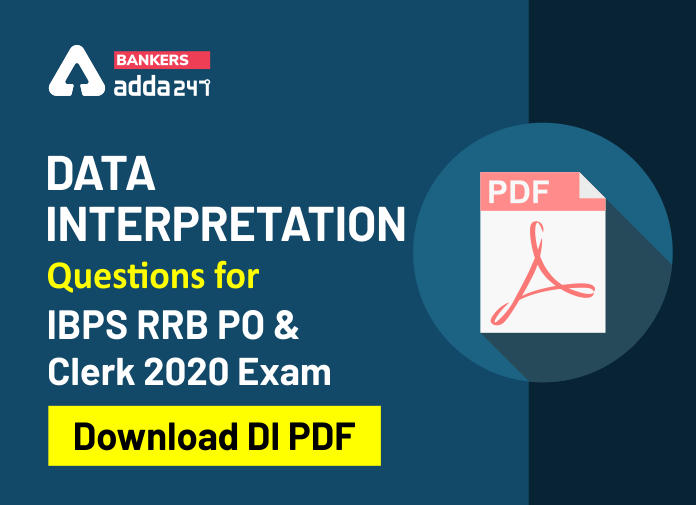Table of Contents
Data Interpretation is an important topic and one cannot give it a cold shoulder to this topic. It is important to practice this topic well. Data Interpretation topic dominates the entire Quantitative Aptitude. Data interpretation topics are based on Arithmetic topics. In this space, we will be providing you the tips & tricks related to Data Interpretation and not only this we will also be providing you Free PDF related to this topic. Make sure to go through these tips and tricks before solving the questions from the PDF.
Data Interpretation And Caselet Question PDF For IBPS RRB PO & Clerk Prelims 2020
All About Data Interpretation?
This topic requires candidates to extract the data from the source. One can easily obtained the date from multiple sources e.g. data from running of industries, census population data, etc. It is important to first analyze the data and the next step require to infer information from it in order to answer questions. Data can be provided in any format like Bars, tables, line graphs, pie graphs.
Different types of Data Interpretation
Given below are the DI students are expected to comprehend data given and find out the answers:
- Tabular DI
- Bar Graph
- Line Graph
- Pie Chart
- Combination DI
- Miscellaneous DI
How To Interpret Data?
Candidates are require to make sense of numerical data that has been collected, analyzed, and presented. Given below are some of the steps that you can follow to interpret the data:
- One of the important step is to read the instruction carefully and all the variables given in the question and try to understand the relation between the different variables first.
- Second step will be to start solving the question based on what you infer from the data.
- The key is to learn all the basic formulas of Arithmetic topics because questions are based on that.
- Topics like : Profit loss, Simple interest & Compound Interest are some of the examiner favourite topics for Data Interpretation.
Importance Of Data Interpretation
Given below are some of the reason which makes Data Interpretation important:
- Data Interpretation is the best way which will help in comparing two different variables.
- One can easily establish relations between two different entities.
- One can easily merge two concepts into one.
- This is one of the best way for the practical application in the workplace.
Now, that you have learned all the tips and tricks related to Data Interpretation, it’s time to solve some of the question related to this topic
Click Here To Download Data Interpretation PDF
Prepare with,
- TARGET IBPS RRB PO/CLERK PRELIMS 2020 Online Live Batch
- Get IBPS RRB PO and Clerk Prime 2020 Online Test Series- Click Here
Register here to receive study material and regular updates for IBPS RRB 2020 Exam
Visit Achieversadda.com and participate in discussions with other aspirants and achievers. Get answers to your queries and connect with others on Achieversadda.com


 Daily Current Affairs 20th April 2024, I...
Daily Current Affairs 20th April 2024, I...
 Daily Current Affairs 19th April 2024, I...
Daily Current Affairs 19th April 2024, I...
 Daily Current Affairs 18th April 2024, I...
Daily Current Affairs 18th April 2024, I...



